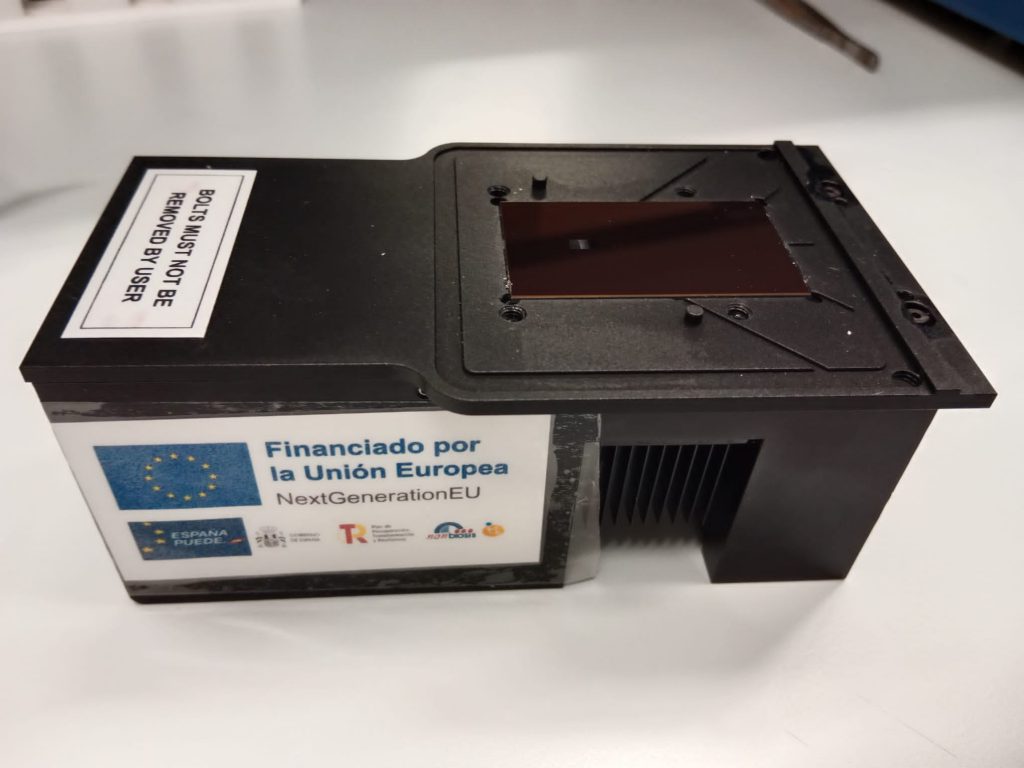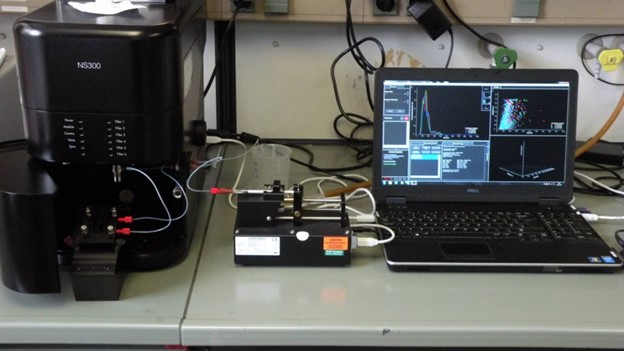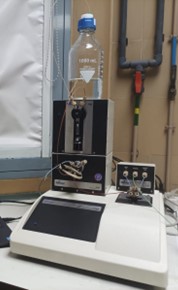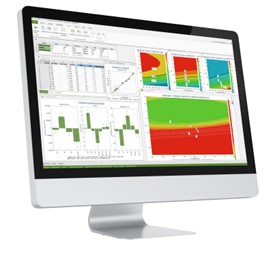U6-E10. Nanosight NS-300 for Nanoparticle Tracking Analysis by fluorescence mode.
NanoSight NS300 – Malvern
Description:
The NanoSight NS300 uses nanoparticle tracking analysis (NTA) technology, which uses the properties of light scattering and Brownian motion to obtain measurements of concentration and size distribution of particles in liquid suspension.
A laser beam passes through the sample chamber, and suspended particles in the path of this beam scatter the light in such a way that they can be easily seen through a 20x microscope on which a camera is mounted. The camera runs at 30 frames per second and captures a video of the particles in their natural Brownian motion. The software tracks the particles individually and, using the Stokes-Einstein equation, calculates the hydrodynamic diameter of each of them.
Technical specifications:
• Size range: 10 – 1000 nm
• Concentration range: 106 – 109 particles/ml
• Temperature control range: 5º C below ambient to 50º C
• Minimum sample volume: 250 µl
• Camera: SCMOS
• Focus: Computer controlled motorized focus
• Fluorescence: 6-place motorized filter wheel, with filter options
• Wavelength:
– Blue: 488nm
– Green: 532nm
Applications:
• Molecular and particle size distribution analysis.
• Concentration measurement.
Update of the Nanosight system
- The Green laser module for the NanoSight NS300 equipment.
The NS300 allows analysis of the size distributionand concentration of all types of nanoparticles from 0.01 – 1 µm in diameter. This new laser module will allow NTA to measure a range of fluorescent particles, avoiding interferences during the measurements due to sample (auto)fluorescence and absorption. This is done by detecting the fluorescence signal, which is emitted naturally by particles or as a result of fluorescence labeling or tagging.

Financed by the project FICTS-1420-27
2. Nanosight NS300 Violet Laser Module 405nm
Description: The NanoSight NS300 instrument provides a reproducible and easy-to-use platform for nanoparticle characterization. The NS300 allows for quick and automatic analysis of size distribution and concentration of all sorts of nanoparticles, ranging from 10 to 1000 nm in diameter, depending on instrument configuration and sample type. Thanks to the possibility of adding interchangeable laser modules and the introduction of a 6-position motorized filter wheel, analysis of different fluorophores can be performed. The sample temperature is fully programmable through the nanoparticle tracking analysis (NTA) software.
Technical Specifications:
- Size Range: 10 nm-1000 nm
- Concentration Range: 10^6-10^9 particles/mL
- Minimum Sample Volume: 250 µL
- Laser Type: 405 nm violet laser
- Fluorescence Filter: 430 nm
- Temperature Range: 5 ºC below ambient temperature up to 70 ºC
Applications: The equipment can be used in various applications and to characterize different types of particles, such as: Extracellular vesicles, Viruses and vaccines, Drug delivery, Biotherapeutics, Colloids and Nanomaterials, Ultrafine bubbles.

Financed by the project ICT2021-006987













